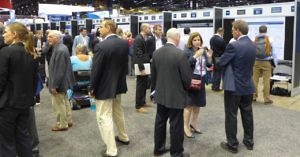ASCO 2014 What do oncologists think of PARP inhibitors?
PARP inhibitors have had a chequered history as anti-cancer agents from the lows of the failed iniparib (Sanofi) phase 3 trial in triple negative breast cancer (TNBC) and olaparib (AstraZeneca) in ovarian cancer to the highs of the initial waterfall plots for BMN673 (Biomarin) in BRCA-positive breast and ovarian cancers and a successful graduation from the ISPY2 trial in the triple negative signature for veliparib (AbbVie). In between those two extremes, there has been a lot of uncertainty.
 At ASCO this year, there was a decent crop of new combination data in both posters and oral sessions looking at various PARP inhibitors in breast or high grade serous ovarian cancer with either chemotherapy (typically platinum-based) or targeted therapies such as PI3K (BKM120) or VEGF (cediranib).
At ASCO this year, there was a decent crop of new combination data in both posters and oral sessions looking at various PARP inhibitors in breast or high grade serous ovarian cancer with either chemotherapy (typically platinum-based) or targeted therapies such as PI3K (BKM120) or VEGF (cediranib).
Another new development, which was hinted at from previous AACR conference notes was the potential to explore Biomarin’s BMN673 in lung cancer, specifically metastatic small-cell lung cancer (SCLC) and germline BRCA-mutation carrier cancer patients in a poster for a phase 1 dose finding trial.
Wainberg et al., concluded that:
“BMN 673 has antitumor activity in patients with advanced previously treated SCLC and significant activity in patients with gBRCA mut ovarian and breast cancer.”
Emphasis the authors.
For today’s article, we’re taking a slightly different approach. Rather than analyse the clinical data, I wanted to explore physician sentiments around PARP inhibitors and they thought about this class of drug. Is there still traction here or has the rise of immuno-oncology wiped out interest in targeted agents?
To find out more about the thought leader sentiments, you can log-in to read the full article.
This content is restricted to subscribers